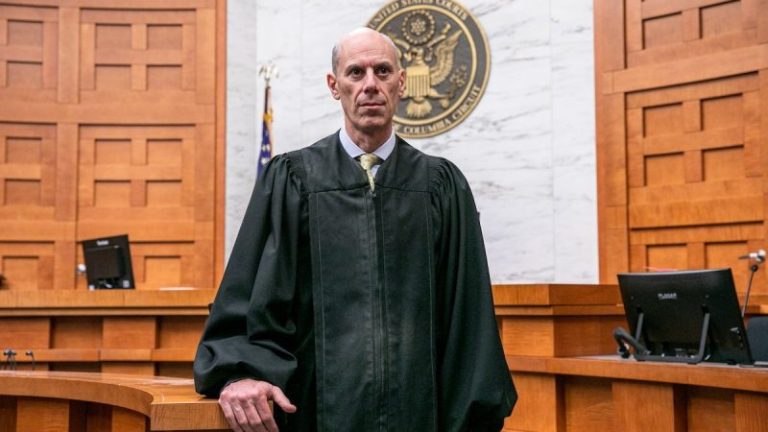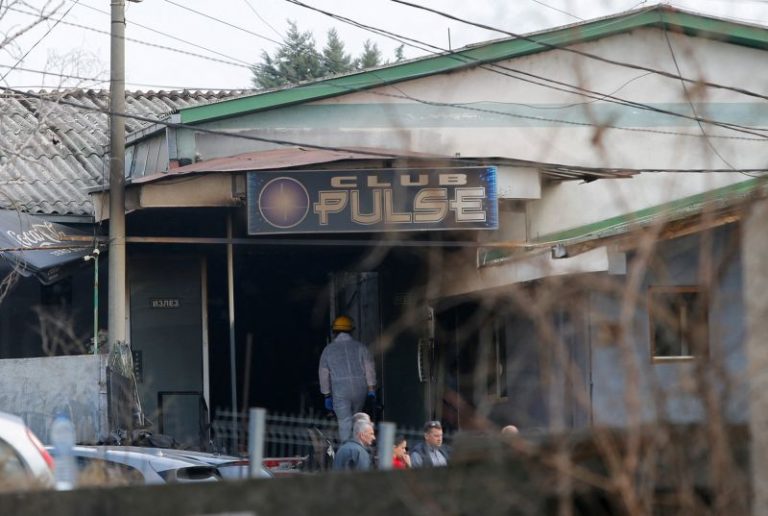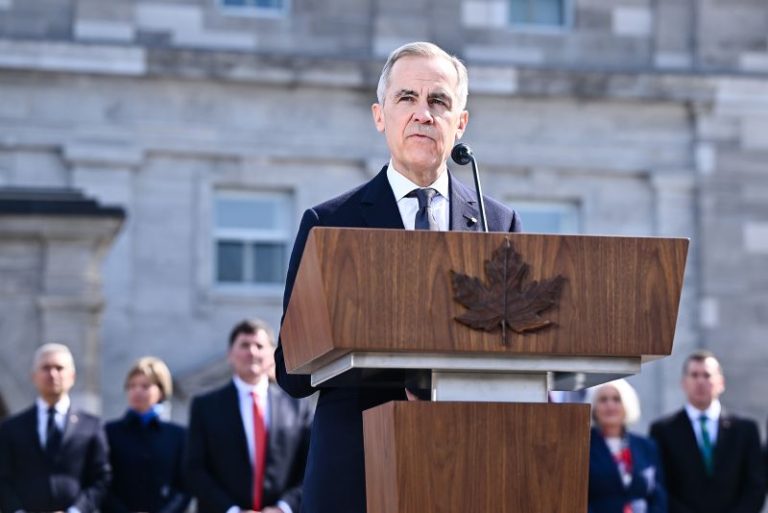President Donald Trump has signed more than 80 executive orders since returning to the White House in January — prompting more than 100 lawsuits against his administration.
While Democratic lawmakers have accused the Trump administration of launching a ‘constitutional crisis’ within the U.S. as a result of these orders, the White House has claimed that ‘low-level’ judges have issued unconstitutional injunctions barring Trump from implementing his agenda and that it will appeal adverse rulings.
‘You cannot have a low-level district court judge filing an injunction to usurp the executive authority of the President of the United States,’ White House press secretary Karoline Leavitt told reporters Friday. ‘That is completely absurd. … It’s very clear that there are judicial activists throughout our judicial branch who are trying to block this president’s executive authority.’
Here are some of the judges, appointed under the Obama and Biden administrations, who’ve pushed back against Trump’s orders:
James Boasberg
Boasberg has served as the chief judge of the United States District Court for the District of Columbia since March 2023, and was first appointed as a judge to the District Court in March 2011 under the Obama administration.
Boasberg issued several key rulings on various cases during Trump’s first administration. For example, he blocked Arkansas, Kentucky and New Hampshire from implementing work requirement waivers for Medicaid recipients, after the Trump administration’s Department of Health and Human Services unveiled a policy permitting states to enforce the waivers for Medicaid recipients.
Ultimately, the U.S. Court of Appeals for the D.C. Circuit issued a ruling in February 2020 upholding Boasberg’s previous decision in the Kentucky and Arkansas case. In the ruling, the appeals court said that former Health and Human Services Secretary Alex Azar ‘failed to analyze whether the demonstrations would promote the primary objective of Medicaid — to furnish medical assistance.’
The Supreme Court then dismissed all pending cases related to the Medicaid work requirements in April 2022.
On Saturday, Boasberg issued an order halting the Trump administration from deporting migrants under the Alien Enemies Act of 1798, which permits deportation of natives and citizens of an enemy nation without a hearing.
However, the flight continued to drop off the migrants in El Salvador, and Leavitt said Sunday the order had ‘no lawful basis’ since Boasberg issued it after the flight’s departure from U.S. airspace.
Boasberg graduated from Yale College in 1985 and Yale Law School in 1990. He also served a seven-year term from 2014 to 2021 on the United States Foreign Intelligence Surveillance Court, which handles surveillance requests for foreign intelligence gathering.
Leo Sorokin
Sorokin, an Obama appointee, joined the United States District Court for the District of Massachusetts in 2014, after previously serving as magistrate judge on the same court.
Sorokin spearheaded a delayed-sentencing program in Massachusetts known as the Repair, Invest, Succeed, Emerge, or RISE, program. The program offers some criminal offenders a yearlong delay in sentencing for some criminal offenders who qualify for pretrial release as they undergo an intensive supervision program.
‘I’m thrilled with how the restorative justice part of RISE has gone, so we’re expanding,’ Sorokin said at an event at Columbia Law School in 2020. ‘I think it’s lawful. I think it’s correct. I think it’s what we ought to be doing.’
Sorokin said his motivation to launch the RISE program stemmed from a conversation he had with a man convicted of bank robbery who explained he wanted to apologize to the bank teller and to his sisters for committing the crime.
Sorokin blocked the Trump administration from implementing an executive order to ban birthright citizenship in February — joining other judges from Maryland and Washington state in issuing nationwide injunctions against the ban. The Trump administration requested the Supreme Court step in Friday and allow it to execute the order, and the Supreme Court requested responses from challengers by April 4.
Sorokin attended Columbia Law School and has worked as a professor for Boston University School of Law.
Amir Ali
Ali, a Biden appointee, is one of the newest judges to the United States District Court for the District of Columbia, joining the court in December 2024. Ali also helped launch the MacArthur Justice Center’s Washington, D.C., branch in 2017, a nonprofit law firm that specializes in criminal justice reform and civil rights issues.
Ali, who eventually led the firm as the executive director, argued and won two cases before the Supreme Court on behalf of the MacArthur Justice Center.
Ali’s ties to the firm came under scrutiny during his confirmation hearing in February 2024 before the Senate, where lawmakers asked him about remarks his MacArthur Justice Center colleague, Cliff Johnson, made in 2020 asserting that defunding the police paves the way for a ‘movement toward making police departments obsolete.’
However, Ali told lawmakers that he didn’t espouse those views, nor did the MacArthur Justice Center.
‘Let me be very clear about this,’ Ali said. ‘I have never advocated for taking away police funding. I would not take that position, and the MacArthur Justice Center has not taken that position.’
On March 11, Ali issued a ruling that determined the Trump administration likely exceeded its constitutional authority when it sought to halt payments the State Department and the U.S. Agency for International Development (USAID) owed to contractors amounting to $2 billion in funding Congress had approved.
Ali has also taught classes on civil, criminal and appellate litigation at schools, including Harvard Law School and the Georgetown University Law Center.
Beryl Howell
Howell, an Obama appointee, joined the United States District Court for the District of Columbia in 2010. She previously served as staff and as general counsel of the United States Senate Committee on the Judiciary from 1993 to 2003.
Howell ruled against the Trump administration March 6, and wrote in her ruling that Trump did not have the authority to fire members of the National Labor Relations Board at will. The Trump administration dismissed National Labor Relations Board chair Gwynne Wilcox in January, prompting Wilcox to file a lawsuit against the Trump administration for violating the National Labor Relations Act, which states negligence and misconduct are the only causes to fire a member of the board.
‘A president who touts an image of himself as a ‘king’ or a ‘dictator,’ perhaps as his vision of effective leadership, fundamentally misapprehends the role under Article II of the U.S. Constitution,’ Howell wrote in the ruling — a reference to a White House social media post in February depicting Trump wearing a crown with the caption ‘Long Live the King.’
Howell also ordered that Wilcox be reinstated to her position.
Howell attended Columbia University School of Law, and served as the deputy chief of the narcotics section and an assistant U.S. attorney in the U.S. Attorney’s office for the Eastern District of New York from 1987 until 1993.
Her work at the U.S. Attorney’s office for the Eastern District of New York earned her the Attorney General’s Director’s Award for Superior Performance and other commendations for her work focusing on international narcotics, money laundering and public corruption cases.
She’s also worked as a professor of legal ethics at American University’s Washington College of Law.
Ana Reyes
Reyes, a Biden appointee, joined the United States District Court for the District of Columbia in February 2023 following a career as a litigation attorney with Williams & Connolly LLP focusing on international litigation, representing foreign governments, foreign government officials and multinational companies.
Previous pro bono work also includes representing refugees for groups like the United Nations High Commissioner for Refugees and Human Rights First. She also received the Hispanic National Bar Foundation’s ‘Judicial Leadership Award’ in 2023.
Reyes is overseeing a case that LGBTQ legal rights advocacy group GLAD Law and the National Center for Lesbian Rights filed in February against the Trump administration for its executive order barring transgender individuals from serving in the military.
The groups are seeking a preliminary injunction pausing the ban while litigation is pending, and Reyes is expected to issue a final decision on the preliminary injunction by March 25.
Reyes attended Harvard Law School, and has co-taught classes at Yale Law School and Georgetown University Law Center on trial practice and advocacy in international arbitration.
Loren AliKhan
AliKhan, a Biden appointee, joined the United States District Court for the District of Columbia in December 2023, after previously serving as an associate judge for the D.C. Court of Appeals.
AliKhan ruled against the Trump administration in February, indefinitely blocking the Trump administration from freezing federal grants and loans. The ruling stemmed from a lawsuit a group of nonprofit organizations filed in January after the Trump administration’s Office of Management announced a pause in loans and grants. Although the administration rescinded the memo, the White House clarified that the order still remained to freeze funds.
‘In the simplest terms, the freeze was ill-conceived from the beginning,’ AliKhan wrote in a ruling in February. ‘Defendants either wanted to pause up to $3 trillion in federal spending practically overnight, or they expected each federal agency to review every single one of its grants, loans, and funds for compliance in less than twenty-four hours. The breadth of that command is almost unfathomable. Either way, defendants’ actions were irrational, imprudent and precipitated a nationwide crisis.’
AliKhan attended Georgetown University Law Center, and supported O’Melveny & Myers, LLP’s Supreme Court and Appellate Practice Clinic at Harvard Law School, as well as the legal writing program at Yale Law School.
She received the National Association of Attorneys General’s ‘Senior Staff of the Year’ award in 2020.
Fox News Breanne Deppisch, Jake Gibson, Andrea Margolis, Lucas Y. Tomlinson and Bill Melugin contributed to this report.










